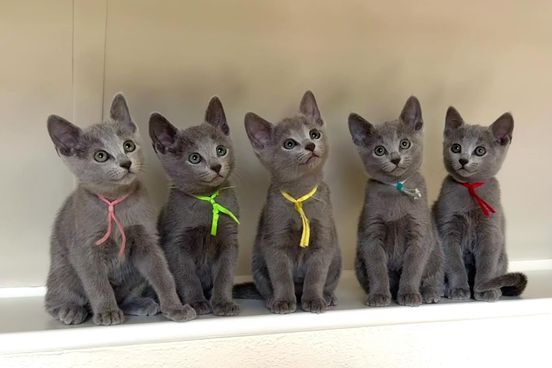Russian Blue cats possess a rare blend of elegance and intellect, making them one of the most trainable feline breeds. Their quiet demeanor and strong emotional bonds with humans create a foundation for meaningful interaction, but effective training requires more than patience it demands an understanding of how this breed thinks and responds. Unlike dogs, cats are not motivated by hierarchy or praise alone. Russian Blues, in particular, respond best to consistency, subtle cues, and a structured environment that respects their autonomy.
Training begins with trust. Russian Blues are naturally reserved and may take time to warm up to new routines or stimuli. Pushing too hard too soon can backfire, leading to withdrawal or avoidance. Instead, shaping behavior through positive reinforcement builds confidence and curiosity. Clicker training, often associated with dogs, works remarkably well with Russian Blues when paired with high-value rewards. These cats are quick to associate sounds with outcomes, and their memory retention allows for complex behavior chains once the basics are mastered.
Food plays a surprisingly central role in training. Beyond serving as a reward, nutrition influences cognitive function and emotional stability. Diets rich in omega-3 fatty acids, particularly DHA, support brain development and neural plasticity. Including these nutrients through fish-based treats or supplements can enhance learning capacity and reduce anxiety, which is crucial for a breed prone to stress in chaotic environments. Protein quality also matters; lean animal proteins provide the amino acids necessary for neurotransmitter synthesis, directly impacting mood and responsiveness.
Environmental enrichment accelerates training outcomes. Russian Blues thrive in spaces that challenge their intellect puzzle feeders, interactive toys, and vertical climbing structures engage their problem-solving instincts. These tools not only prevent boredom but also reinforce lessons learned during formal training sessions. For example, teaching a cat to “sit” or “come” becomes more effective when the behavior is later rewarded through a game or activity that stimulates their natural hunting drive.
Timing and tone are critical. Russian Blues are sensitive to vocal inflection and body language. Harsh corrections or loud commands can erode trust and hinder progress. Instead, using a calm, consistent voice and gentle gestures fosters a cooperative dynamic. Training sessions should be short and frequent, ideally no longer than five minutes, to align with the cat’s attention span and avoid overstimulation. Progress may seem slow at first, but once a Russian Blue understands a concept, they rarely forget it.
Socialization also plays a role in behavioral development. While Russian Blues are not typically outgoing with strangers, early exposure to varied environments and people can reduce fear-based reactions and improve adaptability. This doesn’t mean forcing interactions, but rather creating safe opportunities for exploration. Gradual introductions to new sounds, textures, and routines build resilience and make future training more effective.
Training a Russian Blue is not about dominance or obedience it’s about partnership. Their intelligence demands respect, and their loyalty rewards those who invest in thoughtful, science informed methods. By combining behavioral insight with nutritional support and environmental design, owners can unlock the full potential of this remarkable breed. The result is not just a well-trained cat, but a deeper, more enriching relationship built on mutual understanding and trust.
Related Cat Breeds:

